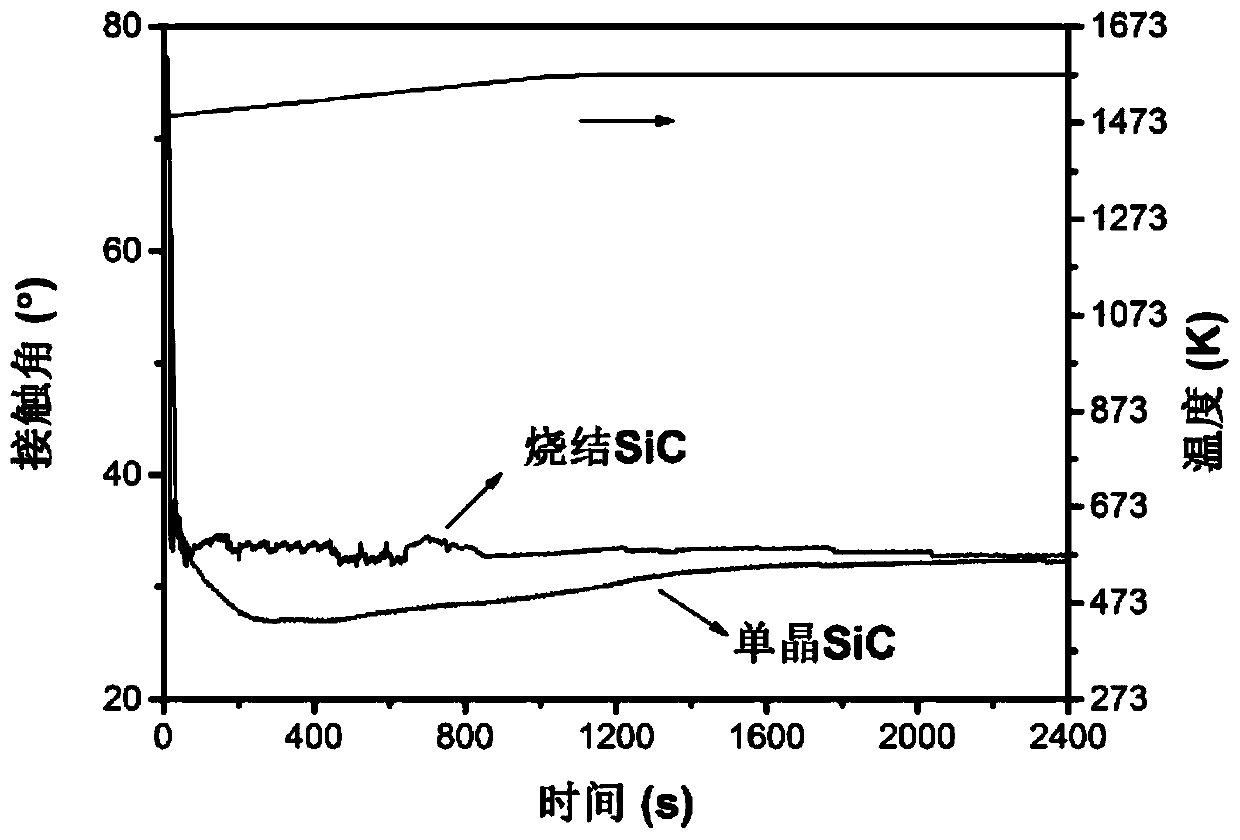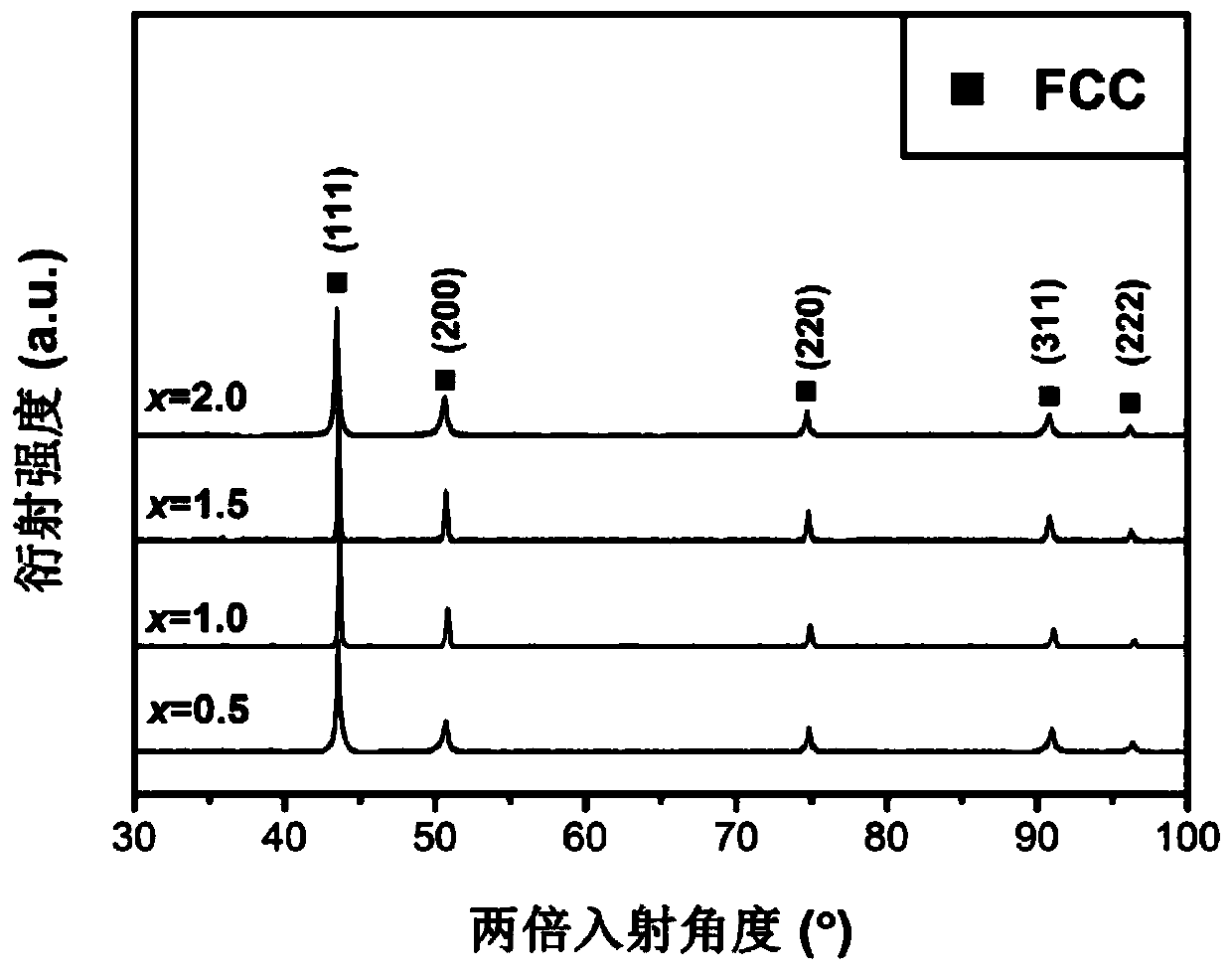Preparation method of high-entropy alloy brazing filler metal and purpose
A technology of high-entropy alloys and brazing filler metals, applied in metal processing equipment, manufacturing tools, welding equipment, etc., can solve the problems that the metal film layer is not tightly bonded and cannot be used in high-temperature occasions, and achieves inhibition of grain growth and uniformity The effect of high reliability and high production efficiency
- Summary
- Abstract
- Description
- Claims
- Application Information
AI Technical Summary
Problems solved by technology
Method used
Image
Examples
Embodiment 1
[0078] (1) Weighing and ball milling: in a glove box where argon exists, weigh 25% of Ni powder, 25% of Cr powder, 25% of Co powder, and 25% of Fe powder by mole percentage, wherein the Ni powder The diameter is 1.6mm, the particle size of Cr powder is 1.6mm, the particle size of Co powder is 1.6mm, and the particle size of Fe powder is 1.6mm. 5:1, ball milling speed is 1400rpm, ball milling bead diameter is 8mm, carry out high energy ball milling 9h with SPEX 8000D high energy ball mill, obtain the product after ball milling;
[0079] (2) Spark plasma sintering molding: collect the ball-milled product, put it into a mold after cooling, then use a pressure of 40 MPa under a vacuum atmosphere, and raise the temperature from room temperature to 1000 °C at a first heating rate of 100 °C / min, and then Raise the temperature to 1100°C at the second heating rate of 50°C / min, hold for 6 minutes and sinter;
[0080] (3) Polishing and cleaning: The high-entropy alloy obtained by sinter...
Embodiment 2
[0084] The difference between this embodiment and Embodiment 1 is that the sintered SiC ceramics are replaced by 6H-SiC ceramics.
[0085] The experimental results show that the contact angle of high entropy alloy solder CoCrFeNi on 6H-SiC ceramics is 32°.
[0086] figure 1 Contact angle diagrams of the high-entropy alloy CoCrFeNi prepared for Example 1 on sintered SiC (Example 1) and 6H-SiC (Example 2, that is, the curve marked with single crystal SiC in the figure) at 1300°C. It can be seen from the figure that when the temperature rises to the melting point of CoCrFeNi alloy, its contact angle on SiC ceramics decreases rapidly to less than 40°, indicating that CoCrFeNi high-entropy alloy and SiC ceramics have excellent wettability. On the other hand, the contact angle of CoCrFeNi alloy on sintered SiC or single crystal 6H-SiC is very small, indicating that the type of SiC ceramic has little effect on the contact angle.
Embodiment 3
[0088] The difference between this embodiment and embodiment 1 is that 33.3% of Cr powder, 33.3% of Co powder, 16.7% of Fe powder, and 16.7% of Ni powder are weighed by mole percentage.
[0089] The experimental results show that the high entropy alloy solder CoCr(FeNi) 0.5 The contact angle of sintered SiC is 40°, and the change of element content ratio is analyzed by XRD pattern. High entropy alloy solder CoCr(FeNi) 0.5 The phase composition is a face-centered cubic single-phase structure, and its melting point is between 1250-1300 °C.
PUM
| Property | Measurement | Unit |
|---|---|---|
| diameter | aaaaa | aaaaa |
| particle diameter | aaaaa | aaaaa |
| particle diameter | aaaaa | aaaaa |
Abstract
Description
Claims
Application Information
 Login to View More
Login to View More - R&D
- Intellectual Property
- Life Sciences
- Materials
- Tech Scout
- Unparalleled Data Quality
- Higher Quality Content
- 60% Fewer Hallucinations
Browse by: Latest US Patents, China's latest patents, Technical Efficacy Thesaurus, Application Domain, Technology Topic, Popular Technical Reports.
© 2025 PatSnap. All rights reserved.Legal|Privacy policy|Modern Slavery Act Transparency Statement|Sitemap|About US| Contact US: help@patsnap.com


